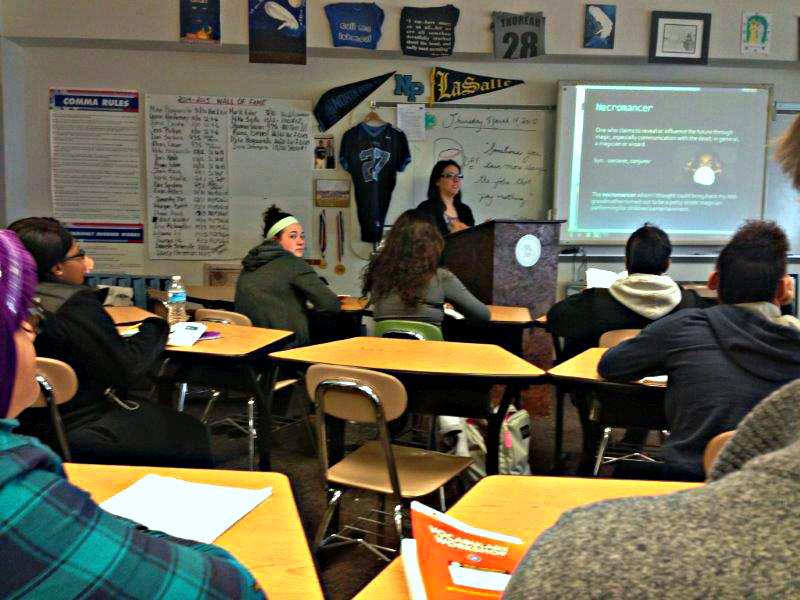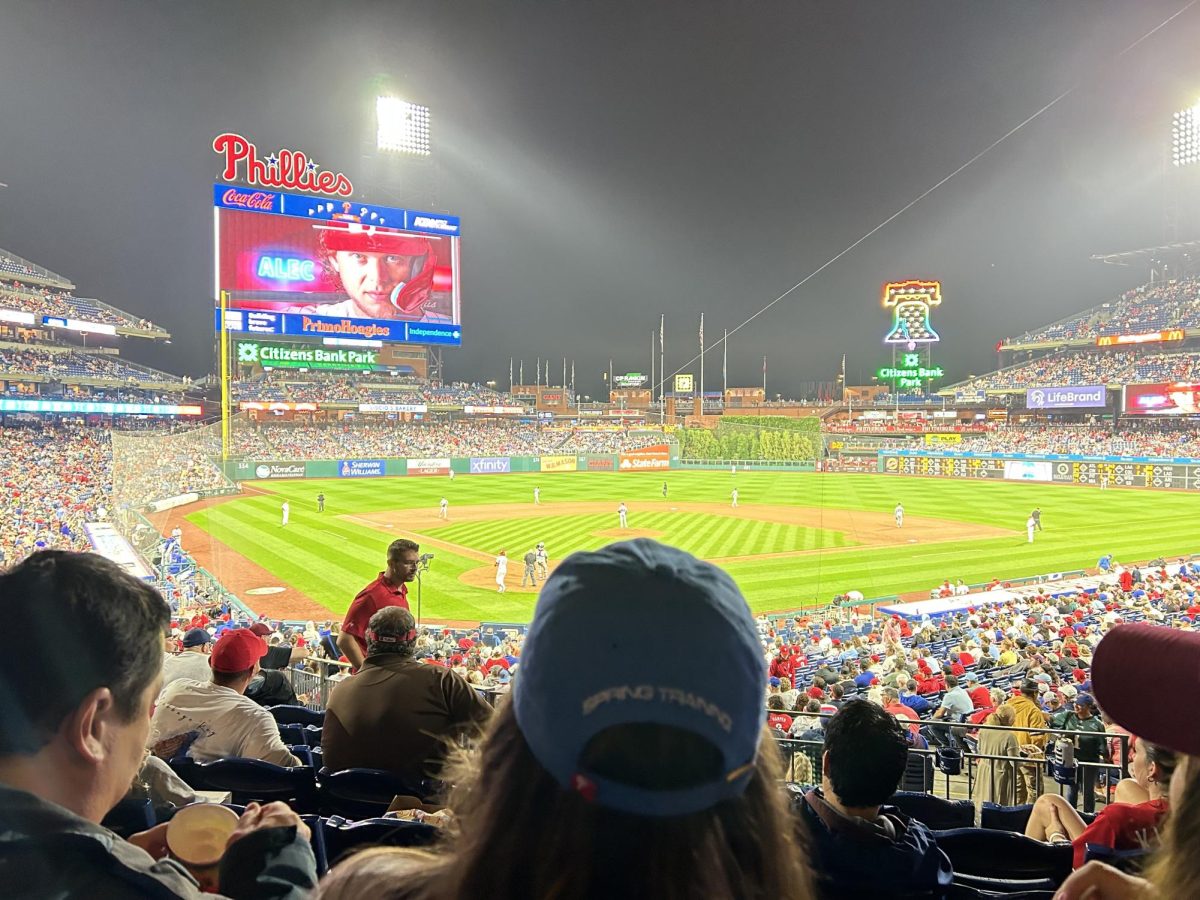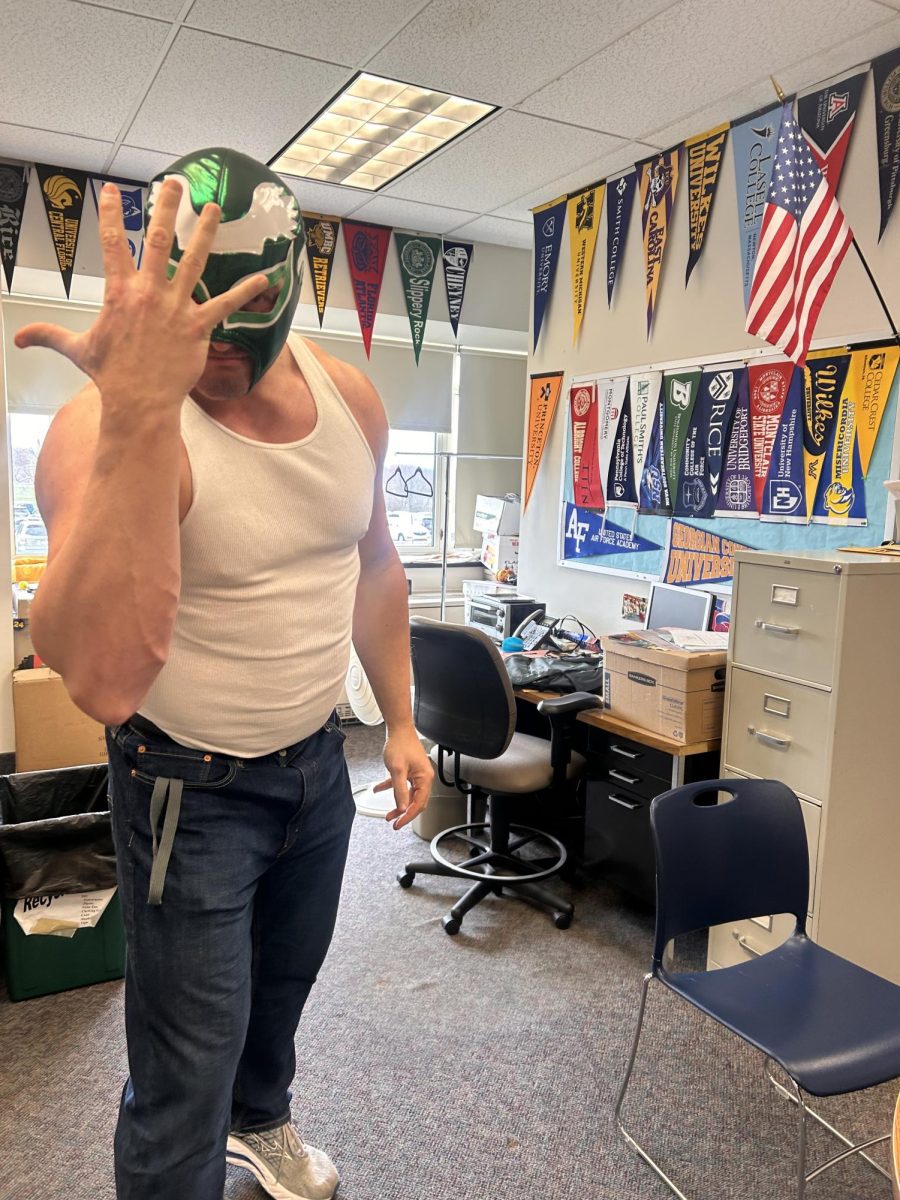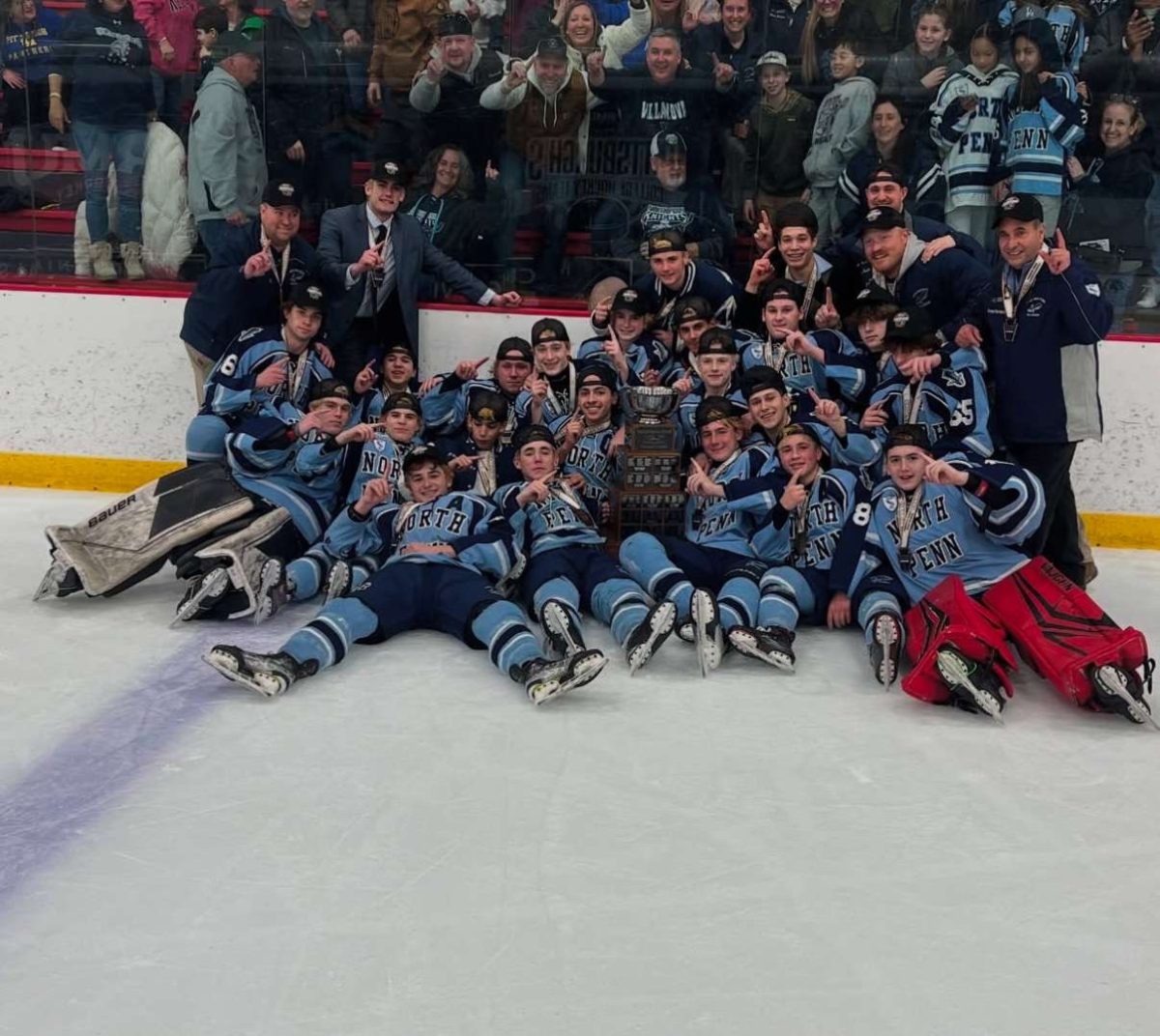When the student teacher takes over: A look at student teachers in the high school classroom
Ms. Annie Monsalve, student teacher from Gwynedd Mercy University, teaches English at NPHS, while junior Evan Peters presents a vocabulary powerpoint.
March 20, 2015
TOWAMENCIN – Nothing switches up the year like a little change in the classroom. You walk into class one day and all of a sudden you see two adults. One is your original teacher and the other… well, is learning how to become an original one. This is a new experience for both sides of the classroom. It’s a firsthand experience to the student teacher as well as a new learning experience for the students. The majority of us have had a student teacher at some point in time, and most have a different perception of how they handle things.
Dr. Melody Leithold, a Science Teacher at NPHS believes that the learning process a student teacher goes through is an essential element for someone wishing to pursue a career in the teaching field.
“The profession of education is similar to the medical profession. A person entering the field needs to practice their skills under the guidance of a certified, experienced professional. Whether you are speaking of a medical intern in a hospital or an educational intern, a student teacher, this is an important, necessary step in the training of the individual to become competent in the craft,” Leithold explained.
Teachers at NPHS feel that it is one of their utmost responsibilities as an educator is to help guide a novice teacher before he or she starts off a new career.
Mr. Joel Evans, a World Culture’s teacher at NPHS embraces this idea.
“It’s my job as a teacher to have a student teacher so I can help somebody (student/student teacher) reach their goal. It makes it different. It makes it better for the kids because they have an option of seeing a different teaching style. The process that the student teacher goes through is that they have to really think about how they convey their information. They have to really think about hitting all the modalities,” explained Evans.
Brenna Ryabin, a sophomore at NPHS and believes that the type of class the student teacher teaches is a key factor towards how challenging the class may be.
“I think having a student teacher is different in every case. Sometimes it is just the same as having your original teacher and other times you just get busy work or extra practice. Sometimes the teacher isn’t exactly sure what the assignments are or in depth details on the topic. It can be difficult to get answers to questions sometimes,” said Ryabin.
Sarah Butz, a sophomore at NPHS believes the transition to a student teacher can be challenging, “It can be rocky at times with a student teacher, for it is their first time and the students are part of the trial and error period for student teacher seeing what way to teach is their way. It is cumbersome at first but once the student teacher finds their flow they are usually pretty good,” reflected Butz.
A student teaching experience helps novice teachers develop certain skills that colleges may be unable to prepare them for once they start teaching their own classes. Mr. Robert Shettsline, an Algebra 3 trigonometry teacher at NPHS has been teaching for over twenty years now. He has assisted several student teachers during his career and believes that one of the most essential skills that colleges don’t prepare you for is, “classroom management.” For example, arguments and conflicts between a student and a teacher or between a student and another student are everyday situations that a teacher has to deal with. Therefore, granted the opportunity to work with kids at a high school, student teachers learn how to handle these everyday conflicts.
Aside from giving advice and constructive criticism to student teachers, teachers have room for self-improvement as well.
“I have my own way and feeling to go about things and the student teaches, they have their way. We can always improve their way and we can always improve my way even. A lot of times student teachers come in( the classroom) and their minds are more open and there’s more open ideas. We can try different techniques and see what works better. Typically every class and every session we teach we will talk about it. Ya know(I’d say), “maybe this could be better” or “I like the way you presented this” or “I like the way you drew this on the board” or “I think you could do this a better way,” explained Shettsline.
Shettsline reflected on his early years of educating and addressed the skills he’s had to obtain.
“I remember when I first student taught. [During] my first lesson, I got along with the kids, but maybe I was a little nervous. And then you (student teachers) start to earn their respect. They are coming in and they might be nervous at first but the more classes they do the nervousness is gone and they start learning the kids names. Then, they start building a rapport with those students. A lot of people don’t know it’s(teaching) parent communication.”
All in all, teachers and students at NPHS have diverse opinions about student teachers. Unlike teachers, students do not have any control over the way class is taught. However, students remain a critical factor of the learning process for a student teacher. The student’s presence in class gives them a feel of what it’s like teaching at a high school. NPHS veteran teachers are determined to pass down their knowledge and skills to novice teachers. Though both sides have different insights, a student teacher’s experience is merely another step in the staircase towards them becoming well rounded professionals.










